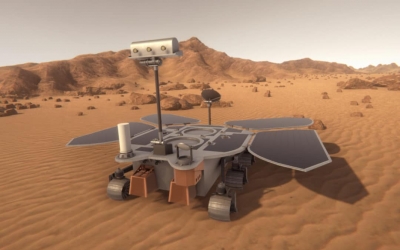
Tianwen-1 is an interplanetary mission by the China National Space Administration (CNSA) to send a robotic spacecraft to Mars, consisting of 5 parts: an orbiter, deployable camera, lander, drop camera, and the Zhurong rover. The spacecraft, with a total mass of nearly five tons, is one of the heaviest probes launched to Mars and carries 13 scientific instruments. It is the first in a series of planned missions undertaken by CNSA as part of its Planetary Exploration of China program.
The mission was launched from the Wenchang Spacecraft Launch Site on 23 July 2020 on a Long March 5 heavy-lift launch vehicle. After seven months of transit through the inner Solar System, the spacecraft entered Martian orbit on 10 February 2021. For the next three months the probe studied the target landing sites from a reconnaissance orbit. On 14 May 2021, the lander/rover portion of the mission successfully touched down on Mars, making China the third nation to both land softly on and establish communication from the Martian surface, after the Soviet Union and the United States.
The Tianwen-1 mission was the second of three Martian exploration missions launched during the July 2020 window, after the United Arab Emirates Space Agency’s Hope orbiter, and before NASA’s Mars 2020 mission, which landed the Perseverance rover with the attached Ingenuity helicopter drone.
China’s Mars program started in partnership with Russia. In November 2011, the Russian spacecraft Fobos-Grunt, destined for Mars and Phobos, was launched from Baikonur Cosmodrome. The Russian spacecraft carried with it an attached secondary spacecraft, the Yinghuo-1, which was intended to become China’s first Mars orbiter (Fobos-Grunt also carried experiments from the Bulgarian Academy of Sciences and the American Planetary Society). However, Fobos-Grunt’s main propulsion unit failed to boost the Mars-bound stack from its initial Earth parking orbit and the combined multinational spacecraft and experiments eventually reentered the atmosphere of Earth in January 2012. China subsequently began an independent Mars project.
Picture Credit : Google




